How Much Power (Watts) Does a Water Purifier Use?
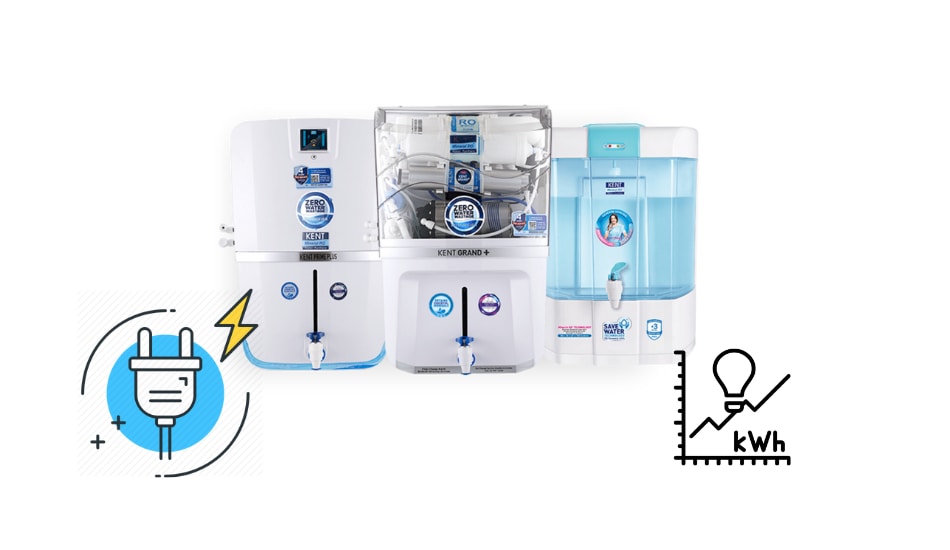
With the help of water purification technology, we can have fresh, safe, and clean water in our homes. Devices like that have become much more advanced over the years, and you can easily purify non-purified water by using various filters. Today, you can find various water purifiers on the market with different dimensions, features, capacity, and power consumption. But, how much power does a water purifier actually consume? In this article, we’ll talk about that. So, let’s start!
So How Much Power (Watts) Does a Water Purifier Use? A standard water purifier consumes between 25 to 60 watts per hour. Considering that the average household uses this device for approximately 5 hours a day and that the average price of kWh in the U.S. is 11 cents, we’ll get that using a water purifier will cost us $0.45 per month, or $5.47 per year.
Water purifiers are mostly used in areas like India, where there is a shortage of fresh water. Keep in mind that these devices use a small amount of electricity (usually around 40W), so they don’t affect the energy bill. In the table below, you can get acquainted with the energy consumption of the five most popular models of water purifiers that are currently available on the market.
| Water Purifier Models | Power [Watts] | Hours per Day | Cost per month |
|---|---|---|---|
| 1. Eureka Forbes Aquasure Smart | 45 Watts | 5 hours | $0.89 |
| 2. HUL Pureit 5L | 55 Watts | 5 hours | $1.09 |
| 3. Kent New Grand 8L | 60 Watts | 5 hours | $1.19 |
| 4. KENT Maxx 7-Liters | 24 Watts | 5 hours | $0.47 |
| 5. Blue Star Excella EX4BLAM01 | 48 Watts | 5 hours | $0.95 |
We have already pointed out that water purifiers consume between 25 to 60 watts per hour, while their daily usage is around 5 hours. To find out the power consumption of your water purifier, look for the manufacturer’s label that is usually located at the bottom of the appliance. There you will find the power of your device.
If you monitor power consumption in your home, then read How Much Power (Watts) Does a Mixer Grinder Use?
How to Measure Water Purifier Power Consumption?
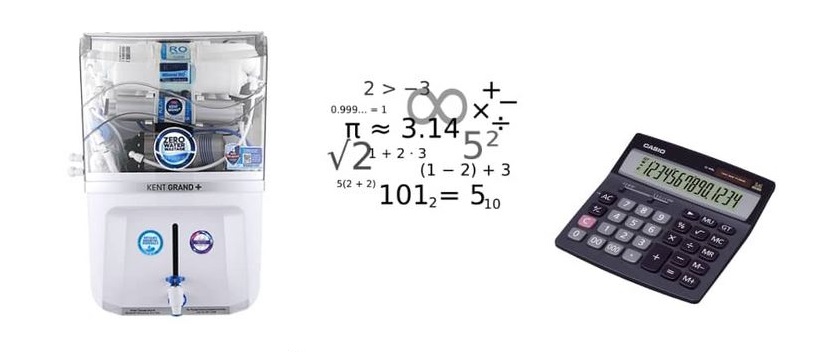
Typically, there are two ways how you can precisely measure the power consumption of a water purifier. The first is by using a Kill A Watt Meter, and the second way is by using the data (label) from the device and calculating it. Both methods are effective, but it should be noted that a more accurate method is still provided by the Kill A Watt Meter since it is connected directly to the outlet from which the current goes to the device.
1. Using A Kill A Watt Meter
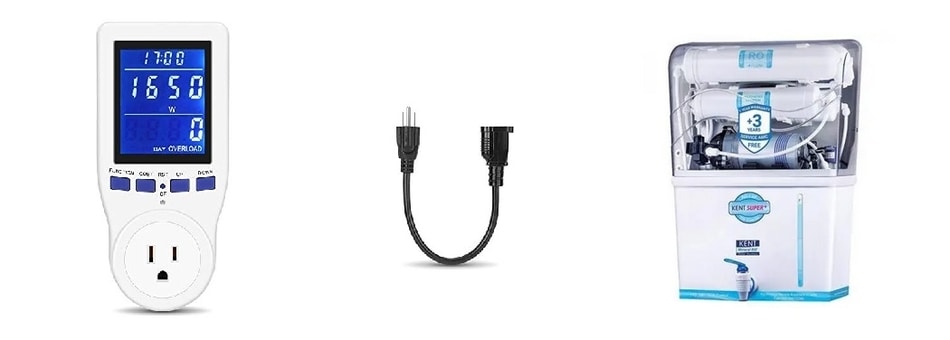
Kill A Watt Meter is a device that is used in situations where you need to check exactly how much electricity a particular device consumes. To use it, you need to plug it into the outlet and then connect the water purifier through it. All the electricity that goes through Kill A Watt Meter will be measured. That way you’ll know the exact number of watts. If you don’t have Kill A Watt Meter, you can buy it on Amazon.
Overall, as we already mentioned, the power consumption of a water purifier is usually very small. Typically, it varies between 25 to 60 watts, which is almost incomparable with other household appliances. If we consider that the average household drinks around 3.96 gallons (15 liters) of water per day, this will be equal to around $1.52 per year. However, as some water purifier models are different, this figure could vary slightly.
2. Calculating the Power Consumption
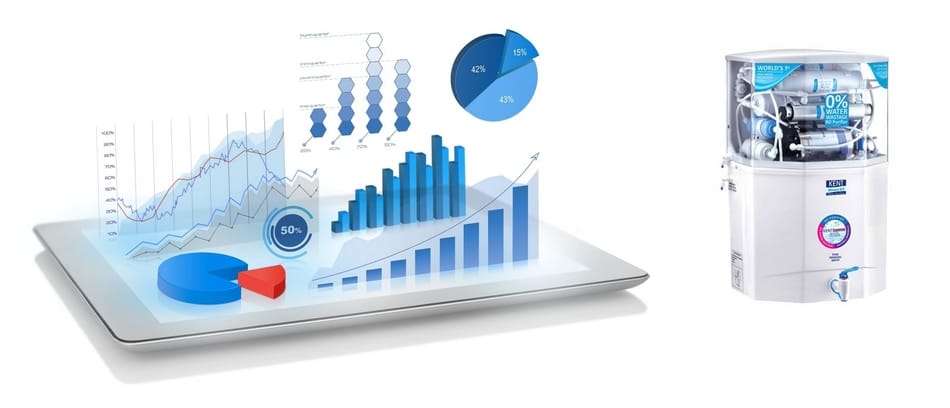
Electrical ratings of the water purifier, in most cases, will be marked in terms of either Amperage (A), Voltage (V), or Watts (W). With the help of these data, you can easily calculate the wattage of your device when you use the following formula:
Watts (W) = Volts (V) x Amps (A)
So, the next step to get the correct calculation of power consumption in kWh, we need to consider the next two parameters:
- The total capacity of device expressed in watts [W].
- How much time water purifier was used per day [H/day].
Example: 0.06 kW (total capacity) x 3H (time that the device was used) = 0.18 kWh
Check out Water Purifier Calculator, which will make this calculation easier for you.
Power Consumption of RO Water Purifier Per Year
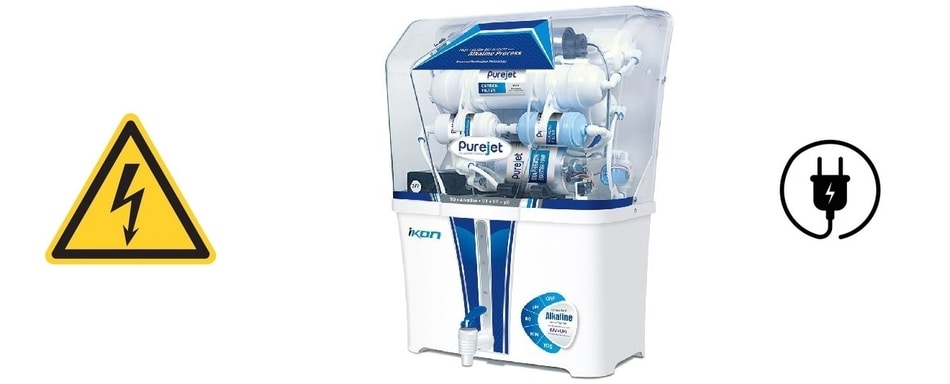
The power consumption of RO Water Purifier is around 11 kWh per year, which is approximately $1.42 (if we take the average price of 11 cents per kWh). To better understand, let’s look at one simple example.
In the following calculation, we will illustrate how much electricity a water purifier consumes.
If a person uses 2 liters (0.5 gallons) of water per day, it will consume approximately 0.03 kW of energy. To consume 1 kW of energy the water purifier must filter 3.3 liters of added water. In the USA the average price of electricity is around 0.11 cents per kWh. If we want to calculate the power consumption for the whole year, we will use the formula below:
- 1 person: 365 days x 0.11 cents (1 kW/h) x 0.03 kW (2 liters/day) = $1.42 per year
- For a family (4 people): 4 x $1.42 = $5.69 per year
In this example, you can easily see that RO water purifiers consume only a small amount of power, so they will certainly not affect your electricity bill. However, there are different models of water purifiers on the market, so the power consumption may vary.
Related Article: How Much Electricity (Power) Does A Fan Use
Should Water Purifier Be Turned Off At Night?
It is not recommended to turn off the water purifier at night. You will not achieve significant savings by doing this. However, by turning off and on the water purifier, you can damage some parts inside, and this device is designed to work 24/7.
Difference Between Electric And Non Electric Water Purifier
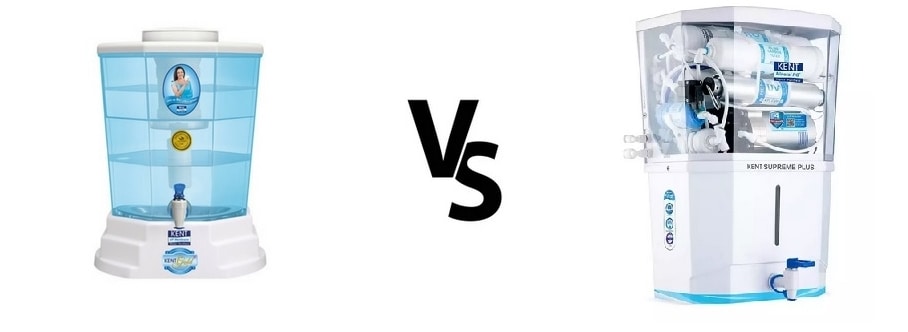
Besides the difference in the mode of operation (electric and non-electric), the main difference is in the method that is used to purify the water. Most electric RO water purifiers (in which pressured water passes through RO membranes) use UV radiation to kill microorganisms. On the other hand, non-electric water purifiers operate by using a sediment filter that works in combination with carbon. Such a filter separates microorganisms on its walls as sediment.
Water purifiers are divided into two types:
- RO Water Purifier (Electrical)
- Nano Water Purifier (Non Electrical)
Working Principle Of RO Water Purifier
Unlike a Nano water purifier that can operate without electricity, the RO water purifier requires electricity to purify the water. Water purifiers that have RO membrane filters are equipped with very small holes of just 0.0001 micrometers (equal to ~ 1/10000 fibers of hair). Their main task is to extract harmful bacteria and heavy metal ions to keep the water clean and safe for drinking without boiling.
When water comes into the device, it will go through the filter where impurities, dirt, heavy metals, and rust larger than 1 micrometer will be removed. These devices usually have softening, bactericidal, and PH balance filters for water purification.
You might also be interested in this topic: How Much Power (Electricity) Does a Water Heater Use?
Best Energy Efficient Electric Water Purifiers
Water purifiers are gaining popularity, especially in India. RO (Reverse osmosis) devices are used to remove water impurities by using ultra-filtration (UF), ultraviolet (UV), and micro-filtration (MF) technology. Buying the right water purifier to suit your needs is no easy task. Here we’ll bring you an overview of the highest circulation models below.
1. Eureka Forbes Aquasure Smart Plus
The Eureka Forbes Aquasure Smart Plus device for water purification can store up to 6 liters of water. This model is made of a food-grade plastic material. This model can easily transform up to 2000 PPM of hard water into fresh and soft water. Its big advantage is an MTDS controller which can adjust the water taste according to the water source. It uses a water filtration process of 6 stages, including UV and RO filters. Eureka Forbs Aquasure Smart Plus consumes energy of 45 W and operates on 24V.
2. HUL Pureit 5L
The HUL Pureit water purifier is a basic model with a water purification process that has 6 stages that go through MF and RO. This model can turn hard water that has 1800 PPM (parts per million) into fresh water within a few minutes. HUL comes with a storage tank of 5 liters and can purify close to 12 liters in one hour. It has an advanced voltage guard and is built from food-grade plastic. This model runs at 55 W while working on 24V voltage.
3. Kent New Grand 8L
The Kent New Grand 8L water purifier is able to purify 20 liters of water in one hour. This device can easily purify hard water up to 2000 PPM (parts per million). Also, Kent’s water-saving technology can manage water wastage. This is a great model if you need a water purifier with a big storage tank. It has a tank that can store 8 liters! This model uses the technology of water purification in 7 stage process, including UV, RO, and UF. It is a great choice for large families. The power consumption of Kent New Grand 8l is 60 W, and it works on 24V voltage.
FAQ: People Also Ask
How Much Electricity Does a UV Filter Use?
You can buy UV filters for around 250 dollars when it comes to small systems. The system for the whole house will cost you around 1400 dollars. Keep in mind that these systems, in the water purification process can store energy as much as a bulb of 60-watt. The UV filters capacity goes from 0.5 gallons to even a few hundred GPM in one minute.
Which Water Purifier Is better? UV or RO
RO purifiers are the far best in almost all aspects of water purification. In comparison to UV devices, they are more efficient because they in most cases have different stages of filtration. They are also much easier when it comes to regular maintenance and are a great choice for big families.
How Many Watts Does a Water Purifier Use?
Typically, a water purifier is used approximately five hours per day and it consumes around 25 watts of electric energy. That is very convenient and affordable for a family’s needs. So, if you think that it is costly to use electric water purifiers, think again.
Final Thoughts
Water purifiers are devices that use a very small amount of energy. So little that you don’t even have to think about. Every water purifier comes with a filter that is in charge of the purification to keep the water clean and fresh. As already mentioned, these devices are most commonly used in India because access to clean water is much lower there than in developed countries. I believe this article has been helpful to you. If you are interested in additional information on this topic, feel free to contact us.
